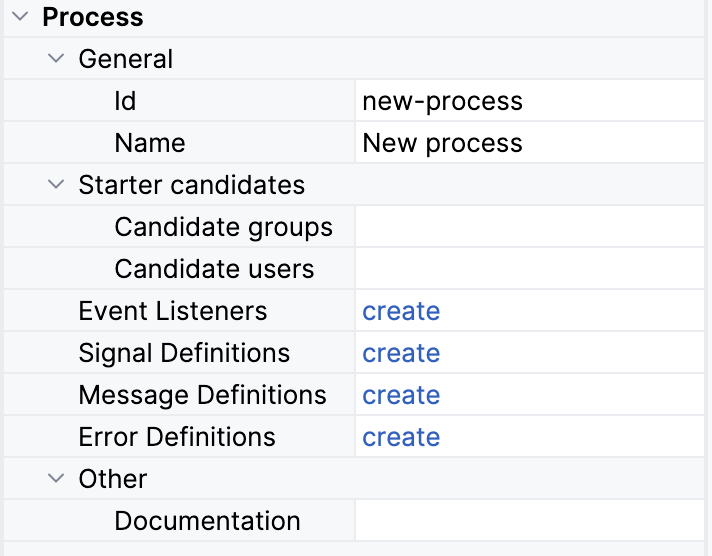Process
A process is defined as a structured flow of activities that are performed to achieve a specific organizational goal. In the BPMN model, a process is a root element containing all other elements.
A process has no visual representation. Anyway, when you are in the modeler, an empty canvas already has a process definition.
A process can be encapsulated into a pool. In this case, the pool visually represents the process, but using pools isn’t mandatory.
XML Representation
In the XML, the process is represented by process element. By default, it has an attribute isExecutable equals true that can be omitted.
<process id="new-process" name="New process" isExecutable="true" >
. . .
</process>Additionally, the process may have processType, isClosed, and definitionalCollaborationRef attributes that are ignored in Jmix BPM.
Here are the process properties in the BPM Navigator:

- ID
-
The process ID identifies the process when it is deployed. In runtime, it is called process key.
When creating a process in Jmix Studio, the system automatically sets the process ID to match the file name. While this is not a strict requirement, you have the flexibility to change the process ID as needed. However, it is considered best practice to keep the process ID and file name identical for consistency and easier identification.
- Name
-
The name property describes what the process does. Its maximal length is 255 characters.
- Starter candidates
-
Users that allowed to start the process. They can be defined by Candidate groups and/or Candidate users. It is the same as setting candidates in the User task, see details here.
If the user is among candidates, he or she will see this process definition in the Start process view.
- Event listeners
-
See listeners.
- Definitions
-
Here you can create event definitions for messages, signals, and errors.
- Documentation
-
Place here a process description. The maximal length is 4000 characters.
